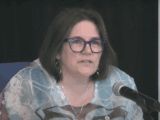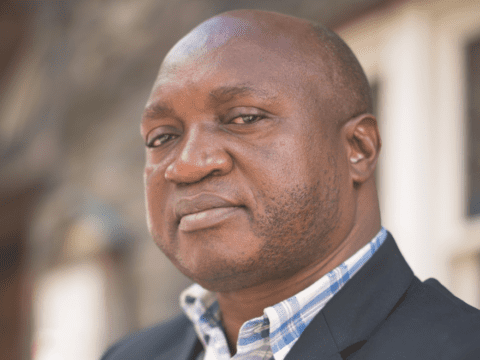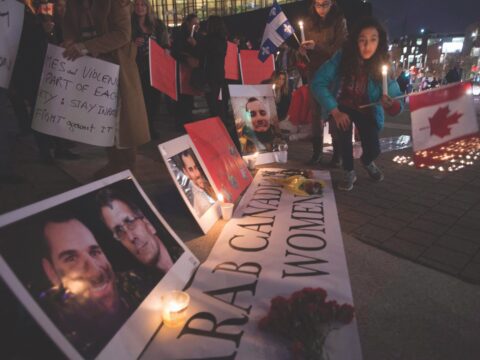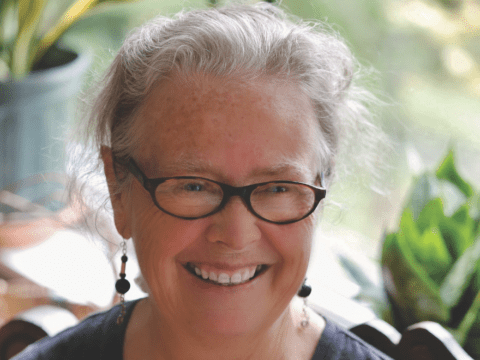Rev. Stan Lucyk is a retired United Church minister who has led pilgrimages to the Holy Land for 30 years. His tours include annual trips to Israel and visits to Syria, Egypt, Jordan and Turkey. He talks to Noelle Boughton about why Canadian Christians should make the journey.
NOELLE BOUGHTON: Why do you think Christians should visit Israel and Palestine?
STAN LUCYK: Is there a Palestine? There’s a Palestinian Authority. But I don’t think there’s a UN-recognized state of Palestine. It’s call the Occupied territories. It’s occupied and under dispute. [The Palestinians are ] allowed to sit at the UN, but the state has not been put in place by the United Nations. The State of Israel is the state recognized by the United Nations.
NB: Okay, why do you think Christians should visit Israel and the Occupied Territories?
SL: Because our boss was a Jew. Because Israel was the Christians’ homeland. Christianity is a historic religion that comes out of Judaism. As [Old Testament scholar] George Ernest Wright said, God is the God who acts — historical acts in historical places and in historical times. To pick up those acts within the place in which that history occurred is to underline the historicity of what underlies Christianity.
NB: How has seeing the land influenced your understanding of the Bible?
SL: Most of the United Church theology I had was mediated through Scotland. Most of my teachers had their PhDs out of Edinburgh. When you go and experience the land, it’s quite different in that you see interpretive links. For example, if you think “Jew” in the Bible, think Bedouin. So much of the folk stuff of biblical times was part of Bedouin culture, which is still there, among Arabs and Palestinians. Take Psalm 23: “Thou preparest a table before me in the presence of mine enemies.” You don’t understand that until you realize the outside ropes of the Bedouin tent were a refuge for anyone pursuing a person for blood vengeance. The whole perspective on biblical interpretation is changed when you experience that world.
NB: What do Canadian Christians learn on these trips?
SL: If they learn anything, they should learn that beneath the surface are countless subsurface stories. It’s always the first-time visitor who has the solution for the Israeli-Arab issue, but the more you visit, the more you learn about the complexity of the Middle East. It should make us cautious about damning one side or the other. Sure, the fence is a dirty, nasty thing. But, in 2002, there were 400 homicides in Israel.
That’s counting terrorism. In 2008, after the fence was put up, there were four. I haven’t heard any Jew who hasn’t said that fence is terrible, but it has proven necessary. Another thing Canadians learn is that 98 percent of the Christians in that world are Palestinians. Our brothers and sisters in Christ in that land are Palestinian Arabs.
NB: How do you choose what people see on your tours?
SL: Normally the tour builds to Jerusalem. That’s the goal of the pilgrimage. Then, one has to do basic homeland stuff for the Christian: Nazareth, Galilee, around the Sea of Galilee. There’s also the question of experiencing the vast range of that tiny country. So I take them to Mount Hermon, the Dead Sea, and out in the wilderness, from which the prophets came.
It’s also a question of going to places associated with the biblical story. We go to the sea coast, so they understand that Pilate usually lived on the coast. He came into Jerusalem only at Passover to make sure the Freedom Festival didn’t get these guys thinking about freedom. And our guy from the Galilee, who talks about a kingdom of God, ends up crucified.
I think part of our tour is also to break down “social distance.” I have a couple like Nadja and Issam Habash, Coptic Palestinian Christians, come in. They allow us to understand something of their world, like having to get up in the morning to get their kids through that security fence. I often hire someone from [the Jewish non-profit organization] Melitz, and on Saturday morning, we go to four synagogues to experience the Yemenite, the Italian and the Reform [services].
I also want them to experience the totally different mosaic of Christianity in Israel. Who’s a Melkite? Who’s a Maronite? Who are the Armenians? Part of this is to open them to what author Philip Jenkins calls “the lost history of Christianity.”
NB: What do they learn about the Israeli-Palestinian conflict?
SL: That depends on whom they talk to and what they read. Take the Gaza conflict. War is dirty. Neither side was right. Hamas with their rockets, and Israel with its attack. But, as a sovereign state, are you allowed to protect yourself?
When the State of Israel was formed, the only one who made sense to me was theologian Reinhold Niebuhr. He said that under a great historical necessity — namely the Holocaust, but also the fact that countries like Canada were unwilling to help refugees — one could justify the establishment of the State of Israel, but there would never be a clean solution to this. At most — in settling land claims and removing Palestinians from their land — we will “approximate justice.”
NB: What opportunities are you able to build into the tour to help participants assess the current conflict?
SL: We meet with Palestinians. We also go back and forth between the Palestinian Authority and Israel. We know there are different standards for different people. We whisk through without our passports even being looked at most of the time because we have a trustee who takes us across. The other thing I usually do is have a group meet with the Palestinian Lutheran bishop of Jordan and Israel, Munib Younan. He spends about an hour with us talking about the dilemma of his people. Often, when we go to Bethlehem, I have the guide in the Authority tell us what life is like. We see the shabbiness of the Palestinians’ clothing, cars and buses when we go into Jericho.
NB: The United Church as 19 partners in Israel and the Occupied Territories. Do you include visits with any of them?
SL: I don’t know who the partners are. I am aware of the Middle East Council of Churches, but I choose the partners I know. Bishop Younan is a Palestinian. In Jordan and Syria, we meet with a Melkite archbishop. It brings back some of that lost history of Christianity.
NB: Most of your tours focus on Israel with only a few stops at historical West Bank sites. How do you respond to critics who say this does not provide an adequate representation of the struggles of Palestinians today?
SL: Most sites germane to the biblical story are on the Israeli side: the Galilee, Nazareth, Jerusalem, the wilderness. Bethlehem and Jericho are in the Palestinian Authority, and we go there. Qumran is in Palestinian territory even though it’s under the Israelis. So we visit Palestinian territories that relate to the biblical story. If you want to tour only what goes on in the Palestinian-Israeli fight, fine, do it, but it’s the biblical story that I’m after.
The sacramental nature of geography, the linking of word to place to bring the past into the present, is the theological rationale for why I do tours. I don’t make money. I’m not in it to push the Israeli side. I’m in religious education.
Noelle Boughton travelled to Israel on a Stan Lucyk tour last spring.
***
This story first appeared in The United Church Observer’s December 2009 issue with the title “’The more you visit, the more you learn about the complexity of the Middle East.’”














